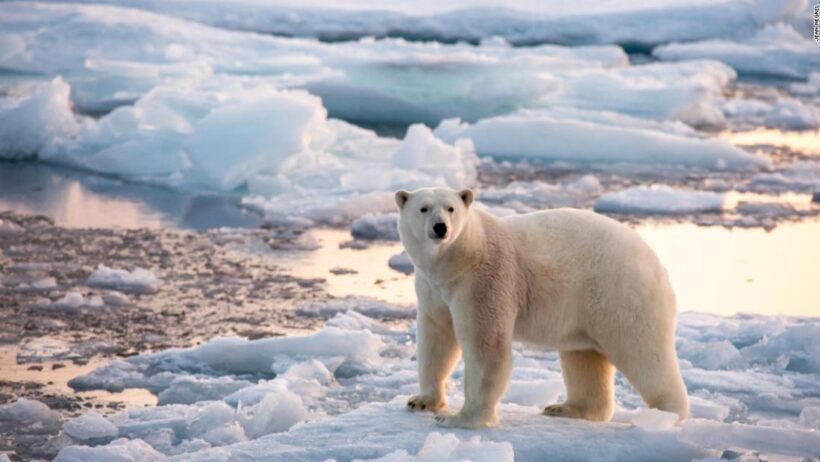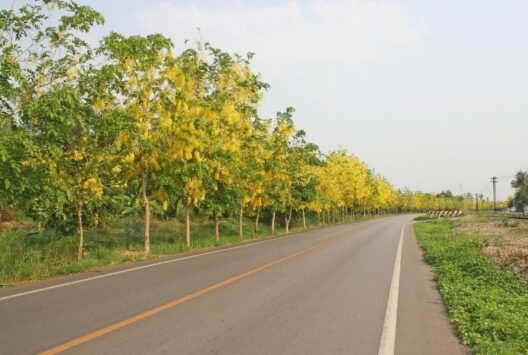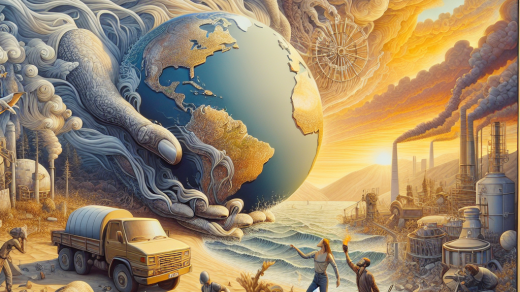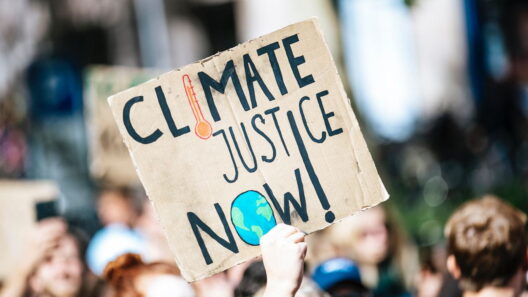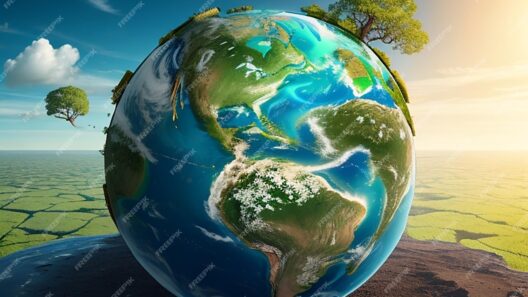As the planet undergoes palpable shifts due to climate change, polar bears—the iconic residents of the Arctic—find themselves at a critical crossroads. Faced with the increasingly dire consequences of melting sea ice, these majestic creatures are compelled to adapt to a rapidly changing environment. However, the question looms large: can polar bears truly survive this relentless onslaught of climate change? To delve into this topic, we must first understand the profound relationship between polar bears and their icy habitat, explore their adaptive strategies, and contemplate the implications of continued environmental degradation.
Polar bears, scientifically known as Ursus maritimus, are marine mammals uniquely adapted to life on sea ice. They rely heavily on this ice for hunting seals, their primary source of sustenance. The retreat of sea ice due to rising temperatures presents an unprecedented challenge, jeopardizing not only their hunting methods but also their reproductive cycles and overall survival rates. The annual extent of Arctic sea ice has been diminishing at alarming rates, resulting in longer fasting periods for polar bears during the summer months when ice is sparse. This shift prompts them to travel greater distances in search of food, compounding the energy deficits already exacerbated by climate change.
Despite these challenges, polar bears exhibit remarkable adaptability. As they evolve within this rapidly altering ecosystem, certain behaviors demonstrate potential resilience. For instance, some studies suggest that polar bears have begun to alter their hunting strategies. Instead of primarily relying on traditional hunting methods that necessitate stable sea ice, they may now be scavenging more frequently. This change in behavior includes feeding on carcasses of beached whales or other marine life, which may offer a crucial lifeline during leaner times when hunting seals becomes increasingly difficult.
Moreover, there is evidence to suggest that polar bears are adjusting their movement patterns in response to changing ice conditions. By learning to navigate and exploit new habitats, they are expanding their range into areas that were previously less accessible. This newfound flexibility presents an intriguing question: can polar bears indeed become opportunistic feeders as their ecological niche transforms? Such adaptability showcases a measure of resilience, yet it also exposes the complexity of survival in an environment undergoing rapid transformation.
Furthermore, climate-induced changes in the polar ecosystems extend beyond the ice. For instance, the encroachment of new species, like land-based predators and competitors, can dramatically impact polar bear populations. The influx of grizzly bears, for example, has been documented in some regions, raising concerns for territorial disputes and potential hybridization, thereby complicating the conservation efforts aimed at preserving pure polar bear genetics. This interaction between species marks a significant shift in the ecological balance, prompting further inquiry into how these changes may ultimately affect polar bear populations in the long term.
In addition to behavioral adjustments, physiological adaptations may also play a pivotal role in the survival of polar bears as climate change persists. Scientists are investigating whether the bears’ predilection for fatty, energy-rich diets could bolster their resilience against increased fasting periods. The role of body condition and fat reserves becomes especially pertinent in the face of summer melts. Understanding the genetic and biological imperatives that dictate their physiology could offer insights into the adaptability of polar bears amidst climatic duress.
However, while these adaptive strategies present glimmers of hope, they should also serve as a sobering reminder of the harsh realities these creatures face. The underlying issue remains—ultimately, polar bears are not immune to the widespread environmental changes wrought by climate change. The cumulative impacts of habitat loss, prey scarcity, and emerging competition could overwhelm their adaptive capacities, leading to significant population declines. Continuous monitoring and robust conservation efforts are urgent, never more so than now, as scientists strive to discern the thresholds of adaptability for polar bears.
The future of polar bears lies at the intersection of resilience and vulnerability. While they may display remarkable adaptability and resourcefulness, the unyielding tide of climate change poses an existential threat that cannot be ignored. Adequate conservation measures are paramount to support their survival and to help mitigate the adverse effects of climate change. Initiatives that focus on reducing greenhouse gas emissions and protecting critical habitats will be instrumental in ensuring that polar bears have a fighting chance against the relentless march of warming temperatures.
Ultimately, addressing the plight of polar bears prompts broader questions about our stewardship of the environment. Can we reimagine our relationship with nature, fostering a commitment to sustainable practices that prioritize ecosystem health? Efforts to combat climate change must not only focus on polar bears but embrace the fundamental interconnectedness of all species. The survival of polar bears serves as a poignant call to action—a reflection of our own responsibility to preserve the fragile tapestry of life on Earth.
In summary, the polar bear’s journey through the tundra of climate change reveals a narrative of adaptation and resilience interwoven with alarming realities. Their ability to modify behavior, exploit new resources, and potentially even adapt physiologically offers a foundation for survival. Yet, the relentless pace of environmental change calls into question the sustainability of these adaptations. As stewards of the planet, we bear the obligation to ensure that these remarkable creatures have the opportunity to thrive amidst the shifting landscapes of a warming world.



